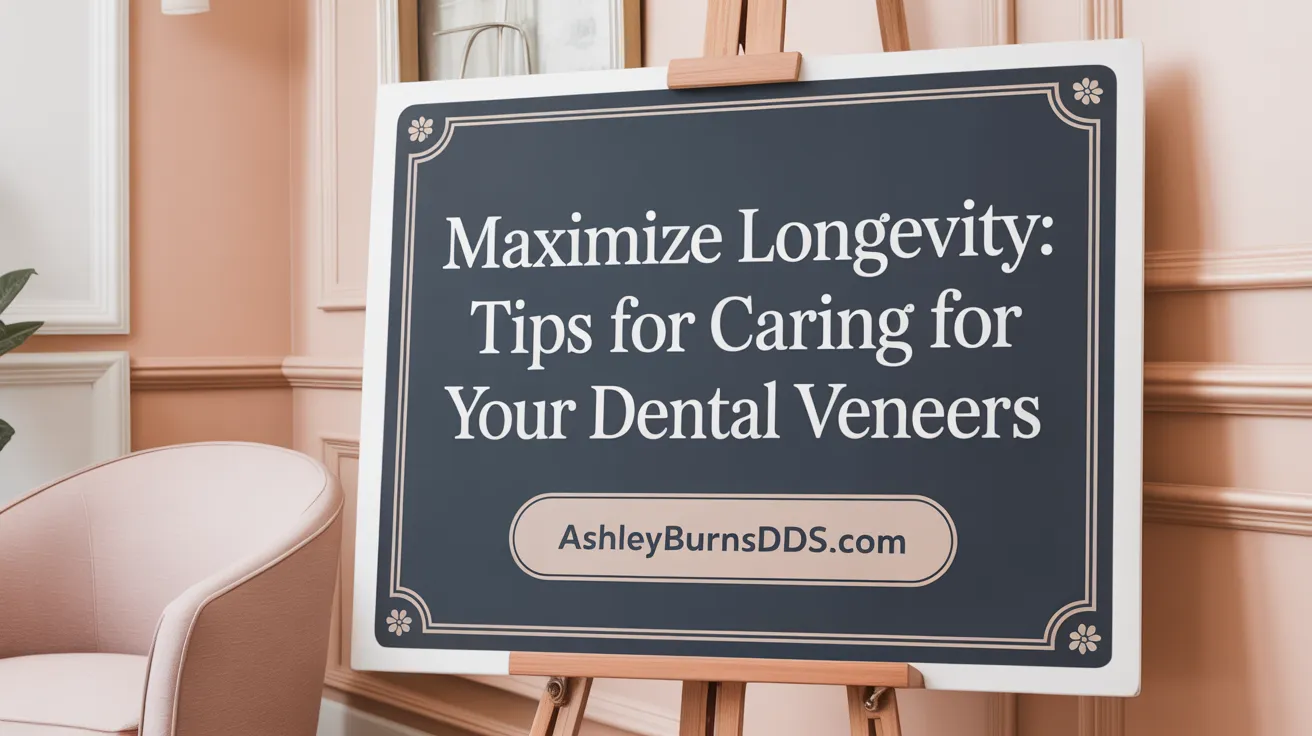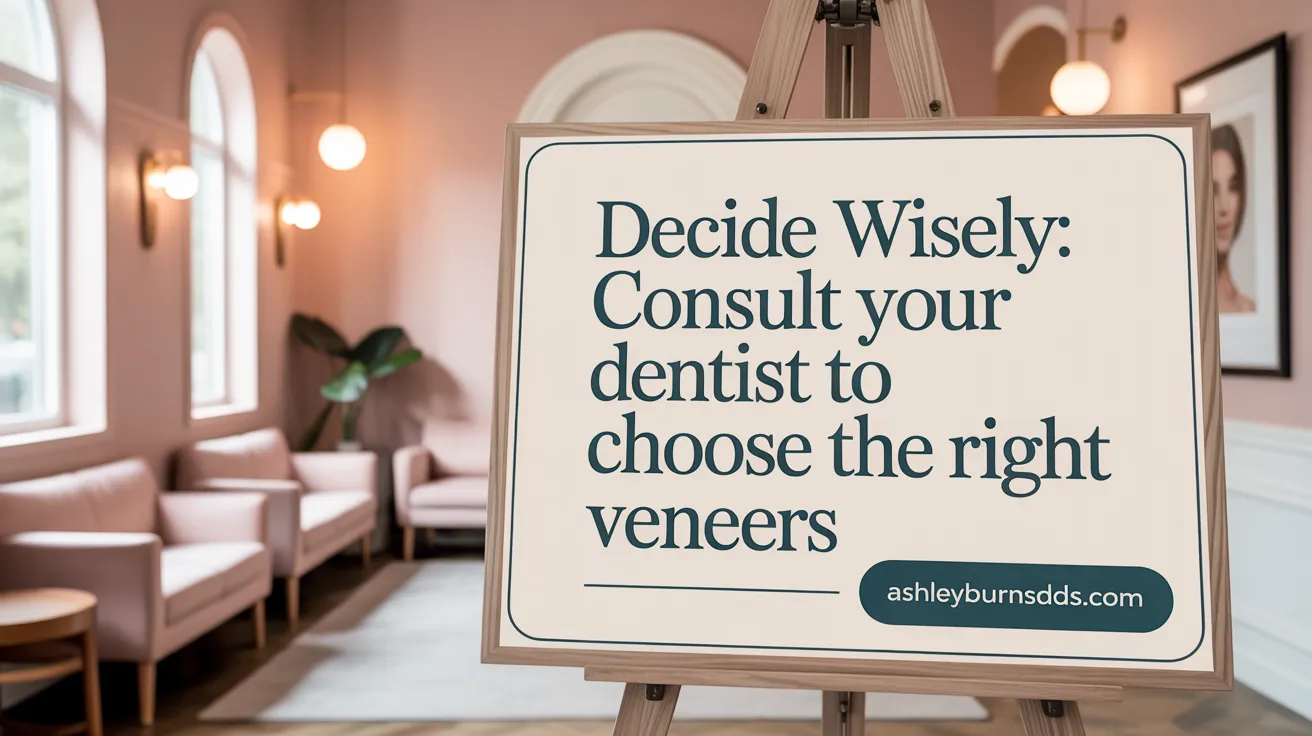Understanding Dental Veneers
Dental veneers are a popular cosmetic dentistry solution designed to cover the front surfaces of teeth to improve their appearance. They can mask issues such as discoloration, chips, cracks, gaps, and minor misalignments, offering a natural, long-lasting enhancement to your smile. This detailed guide breaks down the main types of dental veneers, their unique features, and what makes them suitable for different individuals, helping you determine which veneer option might be right for you.
Dental Veneers and Alternatives Key Facts
- Dental veneers are ultra-thin shells made from porcelain or resin designed to cover front teeth imperfections.
- Porcelain veneers are crafted from high-quality, tooth-colored ceramic that mimics natural translucency and lasts 10-15 years or more.
- Application of porcelain veneers involves removing less than half a millimeter of enamel, followed by bonding with dental cement.
- Porcelain veneers are stain-resistant, durable, and natural-looking, but involve permanent alteration and cost between $1,000-$2,500 per tooth.
- Composite resin veneers are less costly ($400-$2,000), applied directly, and typically last 5-7 years but are more susceptible to staining.
- No-prep veneers, such as Lumineers, are conservative, reversible, involve minimal or no enamel removal, and last up to 20 years.
- Removable veneers are temporary, cost between $200-$1,000, and offer immediate cosmetic improvement with less durability.
- Benefits of veneers include aesthetic enhancement, stain resistance, and minimally invasive procedures, boosting self-confidence.
- Common disadvantages involve irreversibility, cost, risk of damage, increased sensitivity, and potential for bacterial buildup if not maintained properly.
- Making an informed decision requires consultation with a dentist, assessing health, aesthetic goals, and considering alternatives like whitening or orthodontics.
1. Porcelain Veneers: Durable and Natural-Looking Cosmetic Solution
What are dental veneers and how do they work?
Dental veneers are ultra-thin shells made from materials like porcelain or resin composite that are custom-designed to cover the front surfaces of teeth. They work by concealing various imperfections such as discoloration, chips, cracks, gaps, and irregular shapes, thereby enhancing the appearance of the smile. Learn more by reading the Dental Veneers Overview.
Composition and Material of Porcelain Veneers
Porcelain veneers are crafted from high-quality, tooth-colored ceramic material that mimics the natural translucency and texture of real teeth. This material is chosen for its superior aesthetic qualities, including its ability to reflect light similarly to natural dental enamel. For detailed information, check the Porcelain Veneers Benefits.
Procedure and Placement
The process of applying porcelain veneers involves a careful preparation phase. Typically, a small amount of enamel—usually less than half a millimeter—is gently removed from the front surface of the teeth. This step is essential to ensure that the veneers fit seamlessly and look natural. You can learn about the Veneer Procedure Steps and Enamel Removal for Veneers.
After enamel removal, impressions of the prepared teeth are taken and sent to a dental laboratory where the custom veneers are fabricated. Once ready, the dentist bonds the veneers to the teeth using a specialized dental cement, ensuring proper shape, tone, and fit. See more on the Veneer Bonding Process.
Durability and Lifespan
Porcelain veneers are highly durable and can last between 10 and 15 years or more with proper care. Their strength stems from the quality of porcelain, which resists chipping, cracking, and staining better than composite options. Proper oral hygiene, avoiding biting hard objects, and routine dental check-ups can prolong their lifespan. For more details, visit Veneer Durability and Lifespan.
Stain Resistance and Aesthetic Appeal
One of the primary advantages of porcelain veneers is their stain-resistant property. They maintain their bright, natural appearance even after years of exposure to staining agents like coffee, tea, and red wine. Their ability to reflect light also lends them an incredibly natural look, closely resembling real teeth. Learn about Stain Resistance of Veneers and Cosmetic Benefits of Veneers.
Cost and Permanence
While porcelain veneers are among the more expensive cosmetic dental options, typically costing between $1,000 and $2,500 per tooth, they are considered a long-term investment due to their longevity. They involve permanent alteration of the natural teeth because of the enamel removal procedure, making them generally irreversible. Further information is available in Cost of Dental Veneers and Permanence of Veneers.
Suitable Candidates
Porcelain veneers are most suitable for individuals with healthy, minimally damaged teeth, and those seeking to improve the aesthetics of their smile. Ideal candidates do not have active dental decay, gum disease, or significant bite issues. A thorough dental examination is essential to determine if porcelain veneers are the right choice for personal cosmetic goals. See Suitability for Dental Veneers and Consulting a Dentist for Veneers.
2. Composite and Other Veneers: Affordable and Minimally Invasive Alternatives
What are the different types of dental veneers?
Dental veneers come in several varieties, each suited to different needs, preferences, and budgets. The main types include porcelain veneers, composite resin veneers, no-prep veneers, Lumineers, palatal veneers, and removable veneers.
Porcelain veneers are known for their longevity, natural appearance, and stain resistance. They are custom-crafted in a dental lab and require some removal of natural enamel, making the procedure irreversible. These veneers typically last between 10 to 15 years with proper care (Dental veneers overview).
Composite resin veneers are made from a tooth-colored composite material. They can be applied directly onto the teeth in a single visit, making them a quick and cost-effective option. While they are less durable than porcelain and more susceptible to staining, composite veneers are easier and cheaper to repair if damaged (Composite veneers features).
No-prep veneers, such as Lumineers, involve minimal or no removal of natural tooth enamel. This makes them less invasive and often reversible. They are suitable for minor cosmetic corrections and are appreciated for their conservativeness (No-prep and minimal-prep veneers.
Lumineers are a brand of ultra-thin porcelain veneers that are reversible and can often be placed without grinding down the teeth. They require less preparation and are ideal for patients seeking a reversible yet natural-looking solution (Lumineers thinner porcelain veneers).
Palatal veneers are designed for the internal surfaces of upper teeth, typically to treat wear or damage on the tongue side. Made from materials like porcelain or composite, they serve specific functional and aesthetic purposes (Types of Veneers Explained).
Removable veneers, also called snap-on or clip-on veneers, are temporary, non-permanent coverings that can be taken out when necessary. They provide an immediate cosmetic improvement but may impact chewing, speech, and comfort (Removable veneers information).
Application, lifespan, cost, and maintenance
Composite resin veneers are typically applied directly by the dentist during one appointment. They are more affordable, costing around $400–$2,000 per tooth, and generally last between 5 to 7 years. Maintenance involves regular brushing and avoiding foods and habits that stain or damage the material (Caring for dental veneers.
No-prep and Lumineers require less tooth alteration, making the process quicker and less invasive. These veneers are usually placed in just one or two visits. Their lifespan extends up to 20 years for Lumineers, but maintenance remains similar to other veneers, including good oral hygiene and regular dental visits (Veneer procedure steps.
Removable veneers are designed for convenience and reversibility. Cost varies depending on the material, generally spanning $200–$1,000, and they can be taken out for cleaning or when eating. The trade-off is potential discomfort, impact on speech, and limited durability (Removable snap-on veneers.
Differences in invasiveness and repairability compared to porcelain veneers
Porcelain veneers require the removal of some enamel, making the procedure irreversible, and are less repairable if damaged—usually needing replacement if chipped or cracked (Enamel removal for veneers.
In contrast, composite veneers involve less or no enamel removal. They can be repaired easily with composite material, often in a single dental visit (Composite veneers features.
No-prep and Lumineers are designed to be minimally invasive and often reversible because they do not require significant tooth alteration (No-prep and minimal-prep veneers.
Removable veneers, being non-permanent, do not alter the tooth structure and can be replaced or repaired easily (Removable veneers information.
Suitability and candidacy for various veneer types
Porcelain veneers are suitable for individuals seeking long-lasting, natural-looking results, especially when dealing with discoloration or minor shape corrections (Porcelain veneers benefits.
Composite veneers are ideal for patients on a budget or those needing quick cosmetic fixes (Composite veneers features.
No-prep and Lumineers appeal to those who prefer a conservative approach and reversible options (No-prep and minimal-prep veneers.
Removable veneers are suitable for special occasions, temporary use, or trying out a new smile before committing to permanent solutions (Removable veneers information.
Practical considerations including procedure convenience and longevity
Porcelain veneers require multiple visits, with lab fabrication typically taking 1–2 weeks, but they offer a longer lifespan (Dental veneers procedure.
Composite veneers can usually be completed in a single visit, with lower cost but shorter durability (Composite veneers features.
No-prep veneers are quick to place and reversible, making them convenient, especially for minor corrections (No-prep and minimal-prep veneers.
Removable veneers are easy to apply and remove, offering high flexibility but less permanence (Removable veneers information.
Choosing the right veneer depends on personal goals, budget, dental health, and preferences for invasiveness and reversibility. Consulting a qualified dentist can help determine the best suitable option tailored to individual needs (Dental veneers overview.
Benefits and Advantages of Dental Veneers
What are the benefits and advantages of dental veneers?
Dental veneers provide numerous aesthetic and functional benefits that make them a popular choice for smile enhancement. They effectively improve the appearance of teeth by masking issues such as discoloration, chips, cracks, gaps, and uneven or misshapen teeth. Made from high-quality materials like porcelain veneers or composite resin, veneers look natural because they mimic the translucency and texture of real teeth.
One of the most significant advantages is their stain resistance. Porcelain veneers, in particular, are highly resistant to stains caused by foods, drinks, and habits like smoking, helping maintain a bright, white smile over many years.
Veneers are also considered a minimally invasive procedure. They require only a small amount of enamel removal—usually less than half a millimeter—which preserves most of the natural tooth structure. This makes them a less invasive alternative to crowns while delivering dramatic cosmetic improvements.
In terms of longevity, with proper care and maintenance, veneers can last between 10 to 20 years. Regular brushing, flossing, avoiding hard or staining foods, and routine dental visits are essential for maximizing their lifespan. Additionally, veneers can provide protective benefits by covering damaged or weakened teeth, shielding them from further deterioration.
Most importantly, veneers can significantly boost self-confidence. An improved smile often encourages better social interactions and enhances personal and professional self-esteem.
While veneers are an excellent cosmetic solution, it is crucial to remember that they involve irreversible procedures, as some enamel must be removed. Regular dental checkups and good oral hygiene are key to ensuring their durability and maintaining a healthy smile.
Disadvantages and Potential Drawbacks of Dental Veneers
 Dental veneers, while offering significant aesthetic improvements, come with several important drawbacks. One of the main disadvantages is their irreversible nature; placing veneers involves removing a small layer of enamel from the natural teeth, which cannot be restored once done. This means that the procedure permanently alters the teeth, and removal or replacement later becomes more complex.
Dental veneers, while offering significant aesthetic improvements, come with several important drawbacks. One of the main disadvantages is their irreversible nature; placing veneers involves removing a small layer of enamel from the natural teeth, which cannot be restored once done. This means that the procedure permanently alters the teeth, and removal or replacement later becomes more complex.
Cost is another factor to consider. The price of veneers varies widely, with porcelain options typically costing between $1,000 and $2,500 per tooth. As most insurance plans do not cover cosmetic procedures, patients often have to pay out-of-pocket, making veneers a significant financial investment. For more details, see Cost of veneers and Insurance coverage for veneers.
Veneers also carry the risk of physical damage. They are susceptible to cracking, chipping, or dislodging, especially if subjected to trauma, biting on hard objects, or teeth grinding habits. Such damage may require replacement, which adds to the cost and inconvenience.
Another concern is increased tooth sensitivity. Because enamel removal exposes more of the tooth’s inner layer, hot and cold foods or drinks can cause discomfort temporarily, and in some cases, sensitivity may persist.
Furthermore, if dental hygiene is neglected, bacteria can accumulate beneath the veneer, leading to decay or gum disease. This makes diligent oral care and regular dental visits essential, as explained under Veneer maintenance tips.
Lastly, improperly bonded veneers can become loose, creating gaps where bacteria can enter and cause issues like cavities or infections. For these reasons, it is crucial to have veneers applied by a qualified dental professional and to maintain routine dental care to ensure their longevity and health benefits. More information on proper Veneer procedure steps and Veneer bonding process can be found to aid understanding of this.
Risks and Safety Considerations When Getting Dental Veneers
Dental veneers are a popular cosmetic dental solution, but it’s essential to be aware of the potential risks of veneers and safety considerations. One of the most common concerns is tooth sensitivity after the veneer placement. This sensitivity often results from the slight removal of enamel during preparation, which exposes the underlying dentin. Fortunately, this sensitivity tends to be temporary and diminishes as the mouth adjusts.
Another important factor is gum health. Improper fitting or bonding of veneers can lead to gum irritation or inflammation. If the veneers are not precisely bonded, bacteria may accumulate at the margins, increasing the risk of decay or gum disease. Properly fitted veneers, placed by an experienced dentist, help prevent these issues.
The placement process must be carefully managed to avoid issues with bite or speech. Poorly aligned veneers can affect how teeth come together when biting, leading to discomfort or even temporomandibular joint (TMJ) problems. Speech may also be temporarily affected if the veneers alter the natural position of teeth, especially if they are thick or irregularly shaped.
Choosing an experienced, qualified dentist is crucial for minimizing these risks. Skilled professionals ensure that veneers are properly prepared, fitted, and bonded to reduce complications. Regular dental checkups are equally important to confirm the veneers remain well-maintained and correctly positioned.
Maintaining good oral hygiene is vital. Proper brushing, flossing, and routine visits help prevent bacterial buildup at the veneer margins. This ongoing care enhances the longevity of the veneers and decreases the likelihood of complications.
Overall, while dental veneers are safe and effective when performed correctly, understanding and managing these safety considerations contribute significantly to achieving a durable and esthetically pleasing result.
Cost and Pricing Factors of Dental Veneers

What factors affect the cost and pricing of dental veneers?
The price of dental veneers varies based on several key factors. Material type plays a significant role, with porcelain veneers generally costing more than composite resin options. This is because porcelain veneers offer greater durability, a more natural appearance, and better stain resistance, making them a premium choice.
Geographic location and the expertise of the dentist also influence costs. Practices in urban areas or regions with higher living costs tend to charge more, and highly experienced or specialized dentists may set higher fees due to their skill level.
The number of veneers required and the complexity of the procedure affect overall costs. For example, getting multiple veneers or full-mouth sets will increase the total expense. Procedures that involve extensive preparation, such as enamel removal for veneers or additional corrective steps, also add to the cost.
On average, porcelain veneers cost approximately $1,765 per tooth, whereas composite veneers range from about $872 to $1,950 each. Complete smile makeovers or full-set veneers can reach costs of $15,000 or more.
Insurance coverage for veneers typically does not include cosmetic procedures like veneers, so patients often pay out-of-pocket. Many clinics offer financing plans or payment options to help manage the financial aspect.
In summary, the final cost depends heavily on material choice, the scope of treatment, geographic factors, and individual dental needs. Prospective patients should consult their dentist for a personalized quote considering all these elements.
Suitability and Candidacy for Dental Veneers

Who is a suitable candidate for dental veneers?
A suitable candidate for dental veneers overview is someone with healthy, strong teeth and gums, free of decay and active gum disease, who seeks cosmetic improvement for issues such as discoloration, chips, gaps, or minor misalignments.
Veneers require sufficient enamel on the teeth since the procedure involves bonding the custom shells securely onto the tooth surface. If there is not enough enamel, other restorative options might be more appropriate.
Good oral hygiene practices are essential to maintain the appearance and longevity of veneers. Candidates should be committed to regular dental visits, professional cleanings, and following recommended care routines.
It's also important that individuals avoid habits like teeth grinding or biting on hard objects without protection, as these can cause the veneers to crack or dislodge.
Having realistic expectations is crucial; veneers significantly enhance appearance but do not correct underlying functional issues such as bite problems or significant misalignments (Veneers vs crowns.
Finally, a thorough dental consultation is necessary to assess individual suitability. A dentist will evaluate overall oral health, discuss aesthetic goals, and determine if veneers are the best option. This personalized assessment helps ensure successful and durable results from the procedure.
Caring for Dental Veneers and Their Longevity
 Maintaining dental veneers properly is key to ensuring they last as long as possible. A consistent oral hygiene routine involves brushing at least twice a day using a soft-bristled toothbrush, along with non-abrasive fluoride toothpaste. Flossing daily helps remove plaque and food particles from around the veneers, preventing decay and gum disease beneath or near the bonded area.
Maintaining dental veneers properly is key to ensuring they last as long as possible. A consistent oral hygiene routine involves brushing at least twice a day using a soft-bristled toothbrush, along with non-abrasive fluoride toothpaste. Flossing daily helps remove plaque and food particles from around the veneers, preventing decay and gum disease beneath or near the bonded area.
It’s important to avoid hard, sticky foods such as ice, caramel, or hard candies that could chip or crack the veneers. Using teeth as tools to open packages or biting on nails should also be avoided to reduce damage risk. For individuals who grind or clench their teeth, wearing a mouthguard during sleep or sports can provide additional protection against fractures.
Regular dental visits are crucial. Routine checkups allow the dentist to monitor the condition of the veneers, perform professional cleanings, and address any early signs of wear or damage before they become serious problems. These visits help extend the lifespan of veneers and ensure oral health remains optimal.
Porcelain veneers are known for their durability and can typically last between 10 to 15 years with proper care. Some high-quality porcelain veneers may even last up to 20 years. Composite veneers, being less durable, generally last about 5 to 7 years before they require replacement. To maximize their lifespan, maintaining excellent oral hygiene and avoiding damaging habits are essential.
Making an Informed Decision About Dental Veneers

How can a person make an informed decision about whether dental veneers are right for them?
Deciding whether to get dental veneers overview involves several important steps that ensure the choice aligns with your dental health, aesthetic goals, and lifestyle. The first and most crucial step is to consult with a qualified dental professional who can conduct a thorough examination of your teeth and gums. This evaluation will help determine if your oral health is suitable for veneers, especially checking for issues like decay, gum disease, or severe damage that might require other treatments.
Understanding the types of dental veneers available is essential. Porcelain veneers benefits are known for their durability and stain resistance, lasting about 10-15 years with proper care. Composite veneers features, on the other hand, are less expensive and can be repaired easily, but tend to last about 5-7 years and are more prone to staining. No-prep and minimal-prep veneers are less invasive because they require less enamel removal, which makes them more reversible, though they aren’t suitable for everyone.
Discussing the pros and cons of veneers with your dentist is equally important. While veneers can dramatically improve your smile by covering discoloration, chips, gaps, and minor misalignments, they also involve removing a small amount of enamel—a process that is irreversible. Potential risks include increased tooth sensitivity, veneer cracking, or dislodgement, especially if you grind your teeth.
It’s also wise to explore alternative options like teeth whitening, orthodontics, bonding, or crowns, to see if they might better fit your needs. Your dentist can help you weigh these options based on your specific dental issues and aesthetic desires.
Long-term veneer maintenance tips is another factor. Veneers require diligent oral hygiene, including brushing, flossing, and regular dental visits to ensure their longevity. Understanding that veneers are a long-term commitment and that they may need replacement after 10-15 years is key to making an educated choice.
Financial considerations also play a role. The cost of veneers vary, generally ranging from about $400 to $2,500 per tooth, often not covered by insurance because they are cosmetic. Planning for follow-up costs and exploring options like payment plans can help manage the financial aspect.
In summary, making an informed decision involves comprehensive consultation, understanding the advantages and disadvantages of dental veneers, assessing your oral health and aesthetic goals, reviewing alternatives, and preparing for ongoing maintenance—all before proceeding with the procedure.
Are Dental Veneers the Right Choice for Your Smile?
Dental veneers offer a transformative option for those seeking to improve the appearance of their teeth by covering imperfections such as discoloration, chips, gaps, and minor misalignments. With a variety of veneer types available—from durable porcelain to quick and affordable composite options—there is likely a veneer solution to fit different aesthetic goals and budgets. However, veneers are a permanent cosmetic procedure that require enamel removal, good oral hygiene, and professional care to maintain their longevity and appearance. Consulting a qualified dental professional is essential to evaluate your candidacy, understand the benefits and risks, and make an informed decision suited to your unique needs. Ultimately, while dental veneers can significantly boost confidence and smile aesthetics, weighing their pros and cons will help you determine if they are the right choice for you.
